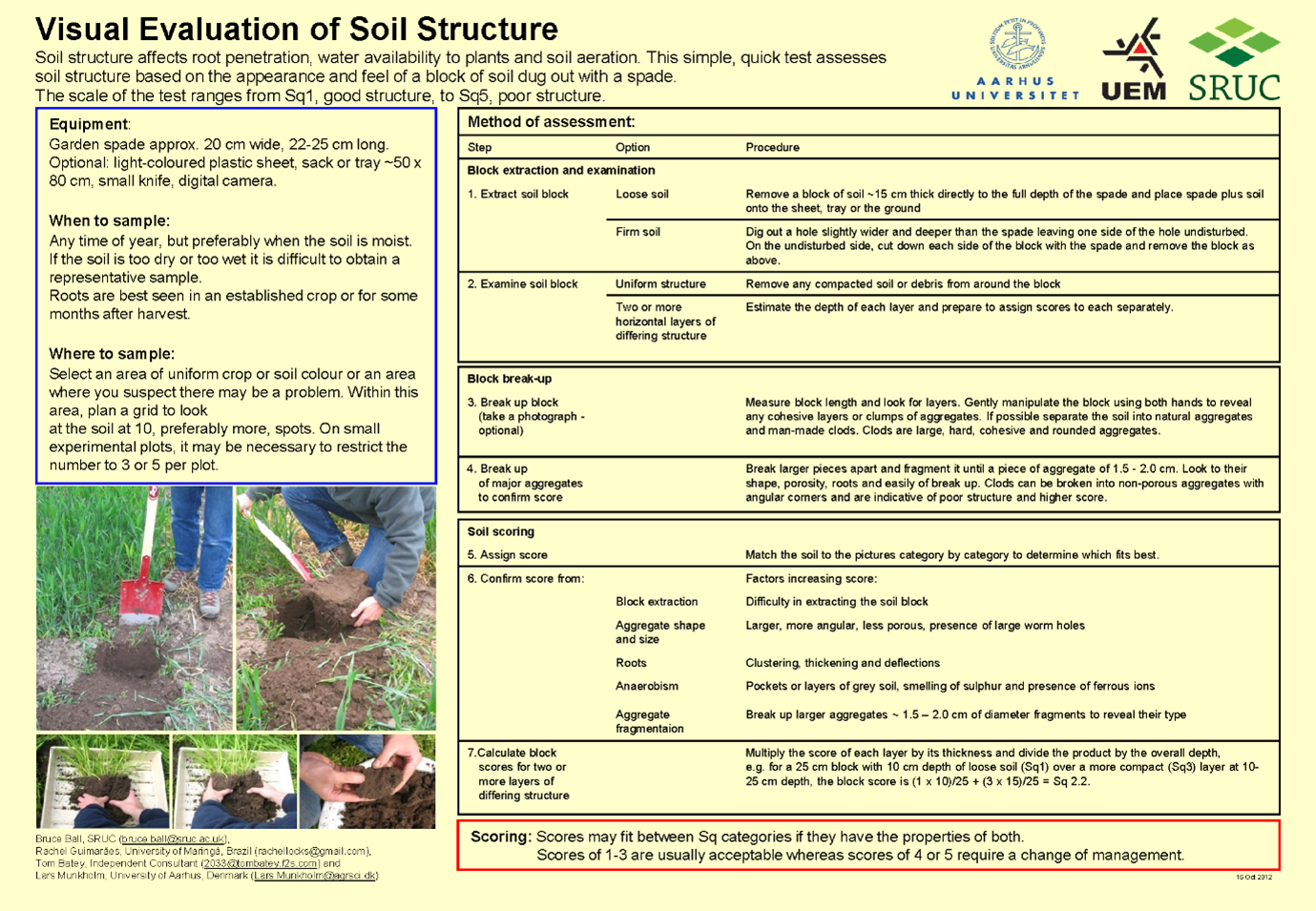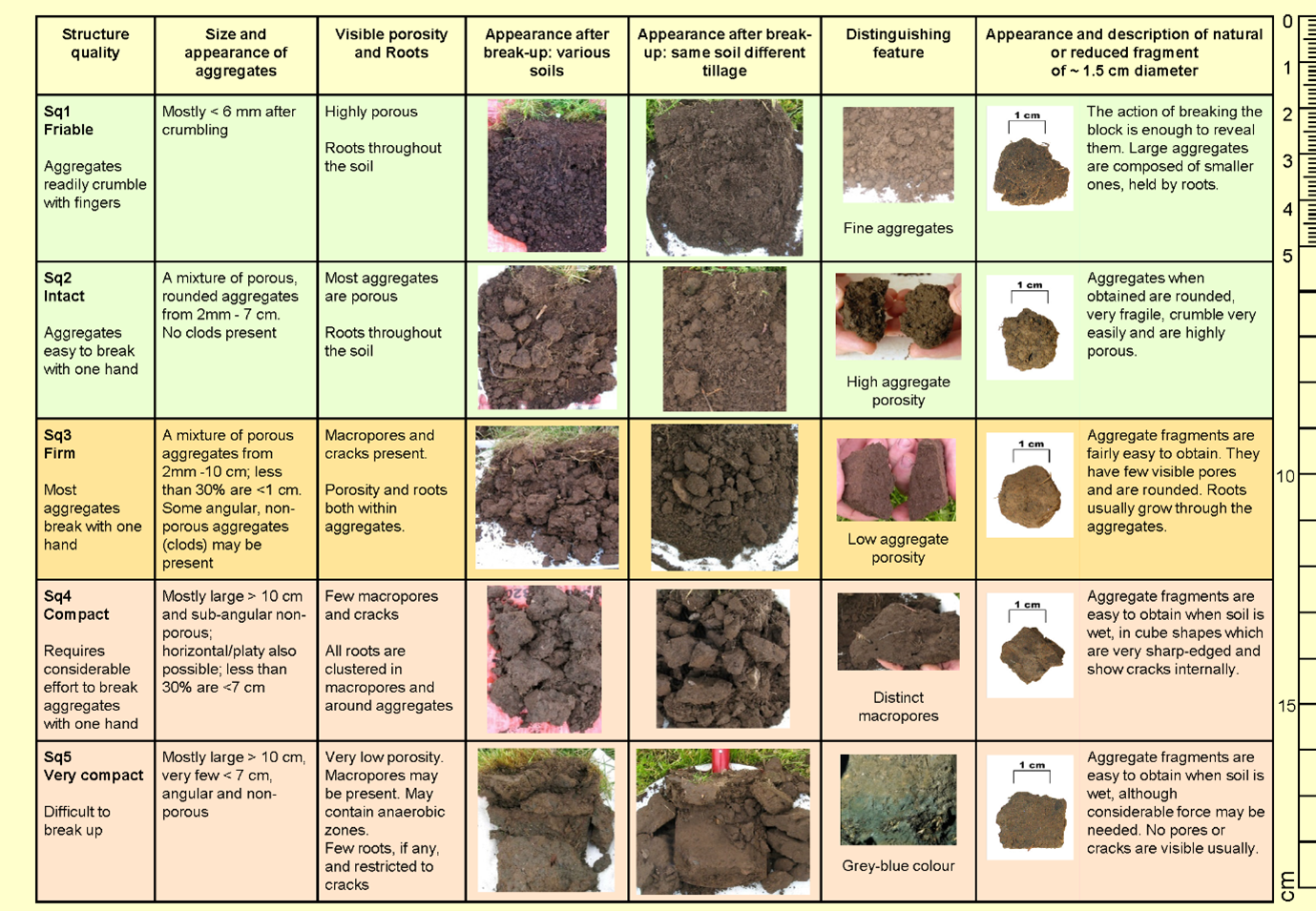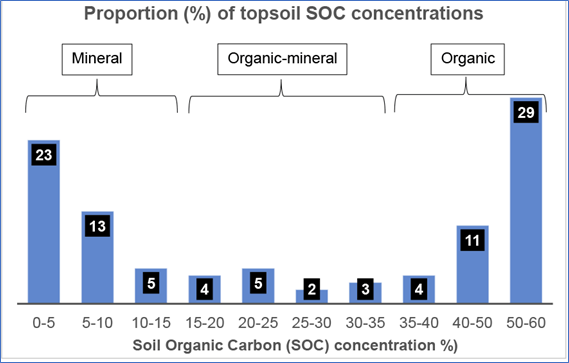Estimates suggest Scotland loses around 920 000 tonnes of soil, with the total cost of soil erosion equating to an estimated £50 million [1]. Being able to reduce and retain soil on farm will bring production, financial and environmental benefits.
Healthy soils are fundamental to agricultural productivity, but also bring wider 'ecosystem services' such as nutrient cycling and carbon storage, sustaining woodlands, water storage and buffering pollutant transport as well as supporting ecosystem biodiversity.
The term soil health refers to a soil’s capacity to function and provide these ecosystem services. Soil health is monitored through the assessment of key soil physical, chemical and biological properties.
Good soil health is key to achieving target yields alongside contributing to wider farm resilience. For example, soils with good structure, high organic matter and diverse species of flora and fauna can support nutrient uptake, recycling and retention, leading to improved sustainable soils. Good soil health and resilience can reduce diffuse pollution risk through reduced soil compaction, erosion and nutrient runoff from the soil. It has been estimated that annually.
SOIL QUALITY: Soil quality refers to the physical, chemical and biological properties such as soil texture.
SOIL HEALTH: Soil health refers to how well the soil performs, for example compaction, crop growth etc.
Gaining an understanding of your soil and soil health status will help you target remedial actions, make better use of nutrients and help to achieve target yields.
Soil systems are a matrix of water, air, mineral particles and organic material (Figure 1). Soils develop as a result of the interplay of five soil forming factors (parent material, organic material, climate, topography and time) and soil development processes (such as weathering, organic matter accumulation, deposition, nutrient and water cycling). Soil formation is a very slow process where in general, few centimetres taking thousands of years to develop.
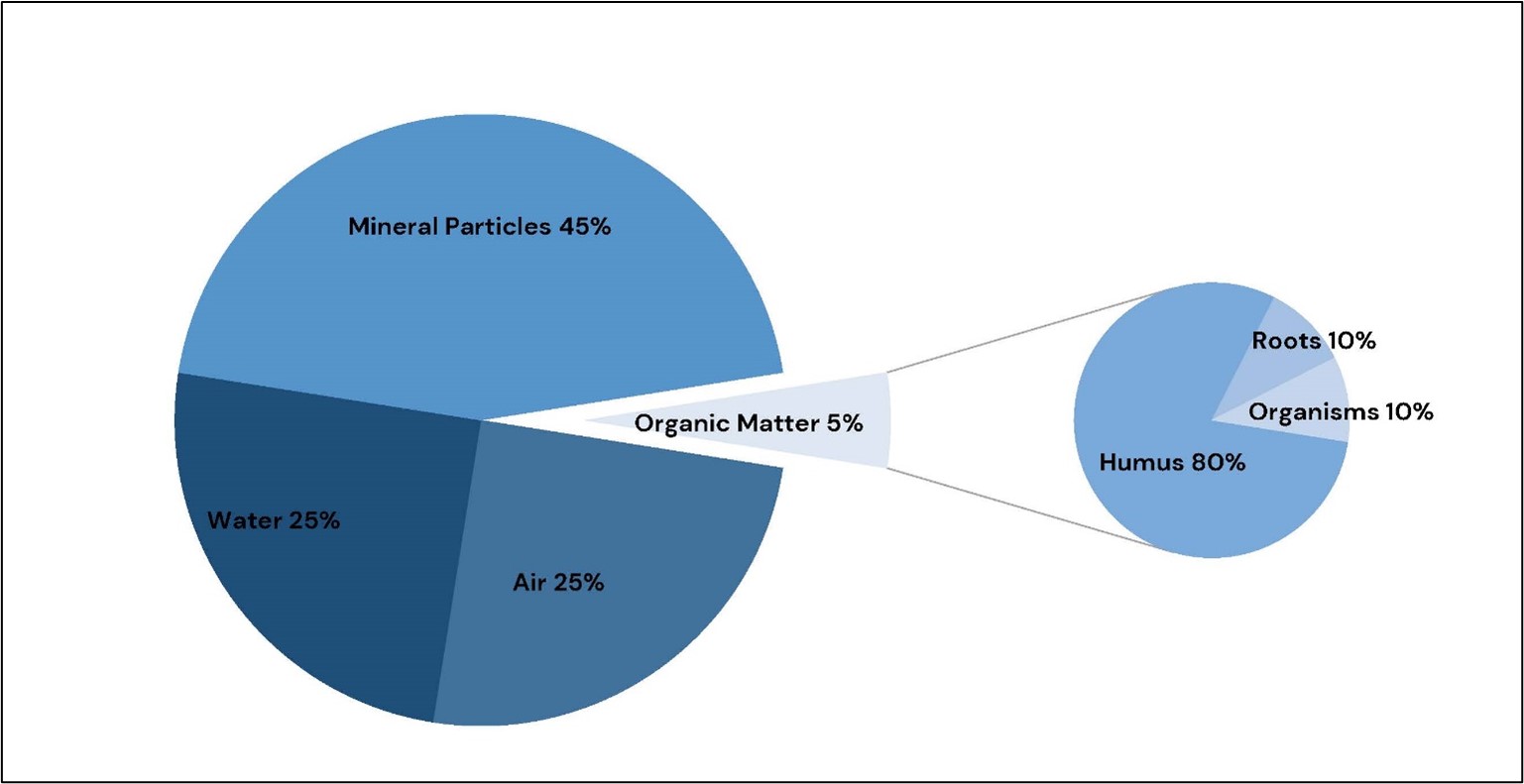
Figure 1 Soil Composition
Soil systems provide many supporting, regulatory, provision and cultural ecosystem functions such as;
- Crop productivity & food security
- Forestry and landscape quality
- A major sink (or source) of carbon (and other nutrients),
- Environmental Interactions (can filter, transfer, buffer pollutants),
- Regulation of major elemental cycles,
- Habitat for organisms and ecosystems – Biodiversity/gene pool
- Important for water quality and flood management
- Cultural heritage in terms of protecting archaeological remains and burial grounds
These services are integral to the agricultural sector and we need to ensure that soils are protected and enhanced to continue to deliver these services sustainably. Soil formation is continuous but in most situations it is very slow. Therefore, managing soils sustainably is vital to conserve the ecosystems services that soil provide. Soil health provides a means of assessing a soil’s capacity to perform these functions.
[1] https://sefari.scot/research/what-is-the-cost-of-soil-erosion-in-scotland#:~:text=A%20review%20of%20published%20papers,ha%2D1%20yr%2D1.
Soil health is monitored through the assessment of key soil chemical (E.g. soil organic matter, nitrogen, available nutrients, soil pH), physical (E.g. soil structure, aggregate stability, texture) and biological (earthworms, nematodes, microbial biomass, microbial community composition, microbial respiration) properties.
Good soil health is key to achieving target yields alongside contributing to wider farm resilience. For example, soils with good structure, high organic matter and diverse species of flora and fauna can support nutrient uptake, recycling and retention, leading to improved sustainable soils. Good soil health and resilience can reduce diffuse pollution risk through reduced soil compaction, erosion and nutrient runoff from the soil.
Gaining an understanding of your soil and soil health status will help you target remedial actions, make better use of nutrients and help to achieve target yields.
Threats to soil health:
Healthy soils are fundamental to agricultural productivity, but also bring wider ‘ecosystem services' such as nutrient cycling and carbon storage, sustaining woodlands, water storage and buffering pollutant transport as well as supporting ecosystem biodiversity. Estimates suggest Scotland loses around 920 000 tonnes of soil, with the total cost of soil erosion equating to an estimated £50 million per annum [2]. Being able to reduce and retain soil on farm will bring productivity, financial and environmental benefits.
It is important to monitor key soil characteristics in order to determine soil health status and the direction of change your systems may be undergoing in order to better understand their full potential to perform the ecosystem services outlined above. There are a range of soil characteristics that are useful to establish and/or monitor which involve tests that can be performed in the field on-fam (such as hand texturing) as well as laboratory analyses for more detailed information about soil composition. More information is given in soil analysis.
The Agriculture and Horticulture Development Board (AHDB) have produced a soil health scorecard for Scotland to allow farmers to monitor their soil health using indicators such as: soil structure; pH; extractable nutrients; earthworm count; and soil organic matter. The scorecard is broken down with supplementary information to guide users though, producing a traffic light system to help management decisions on farm.
[2] https://sefari.scot/research/what-is-the-cost-of-soil-erosion-in-scotland#:~:text=A%20review%20of%20published%20papers,ha%2D1%20yr%2D1.
Soil particles clumped together are termed soil aggregates and spaces between soil aggregates are called pores, which allow for the movement of air, water and roots. The arrangement of soil aggregates and pores within the soil matrix governs soil’s bulk density, porosity and water infiltration rate. If soils become compacted, this limits pore space and restricts root movement, affecting growth and potentially preventing access to water and nutrients.
A good starting point when determining your soil structure is the Visual Evaluation of Soil Structure (VESS) assessment; you can watch a step by step guide here. This process allows you to assess your soil structure and decide whether further action is required to help improve the quality and management of soil. This easy, step-by-step assessment can be done with a spade and assessment chart (Figure 2)
Figure 2: Visual Evaluation of Soil Structure Assessment Guide
‘Aggregate stability’ refers to an aggregates ability resist degradation when exposed to external forces such as water erosion and wind erosion, shrinking and swelling processes, and tillage. Therefore, serving a critical role in structural functions. The stability of aggregates is dependent on organic matter content, clay content and biological activity and generally increases as they increase (organic “glues” resulting from biological decomposition of organic matter), A slake test can be performed to test aggregate stability
Poor aggregate stability can result in the breakdown of soil composites which can result in SOM being exposed to degradation and therefore nutrient losses in the form of greenhouse gases (through mineralisation of carbon to CO2 and/or nitrogen as N2O) or leaches in runoff. These processes can be exacerbated by a need to then apply more fertillisers to maintain yield, which leads to further greenhouse gas emissions. It is therefore vital to manage soils to maintain or improve aggregate stability and structure (links) Understanding your soil structure and texture can help you mitigate against erosion, compaction and soil loss. Soil classification varies across Scotland as is explained in Technical Note TN766 Soil Classification and mapping, produced by the Farm Advisory Service.
The James Hutton Institute (JHI) have produced soil and land classification maps for Scotland. These resources can help you understand your soil and help form mitigation strategies to improve and safeguard your soil. JHI have produced a series of risk maps which highlight areas across Scotland which are prone to compaction risk for topsoil and subsoil; the risk of runoff; leaching potential; and the risk of soil erosion. These resources should be consulted in making management decisions to improve soil quality.
Further information
- Download and review actions in the Valuing Your Soils Practical Guide. This document contains information and tips to improve soil condition.
- Carry out a soil water infiltration test – this guide shows you how.
- See the Farm Advisory Service (FAS) technical notes and practical guides to improve soil structure and Soil classification and mapping.
Soil texture is one of the most important properties of a soil and it greatly affects land use and management. It affects the amount of water and nutrients that a soil can hold and supply to plants. Soil texture is defined by the proportion of three types of particle – sand (0.06mm to 2.0 mm in size); Silt (0.002mm to 0.06 mm) and clay (less than 0.002 mm). The soil textural triangle (Figure 3)uses the proportions of these three particles to describe the soil texture of mineral soils in the field. (Organic (peaty) soils are not included). For more information on soil texture the Valuing Your Soils Practical Guide includes information on how to assess soil texture and explains the functionality of the soil within each texture.
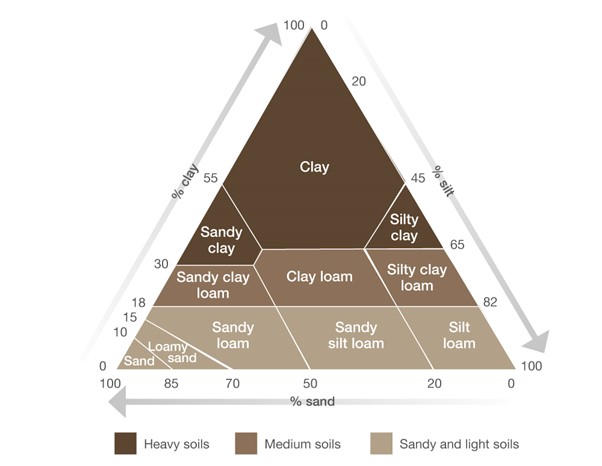
Figure 3
For more information on soil texture the Valuing Your Soils Practical Guide includes information on how to assess soil texture and explains the functionality of the soil within each texture. Figure 4 shows the process of how to gauge your soil texture without analysis.
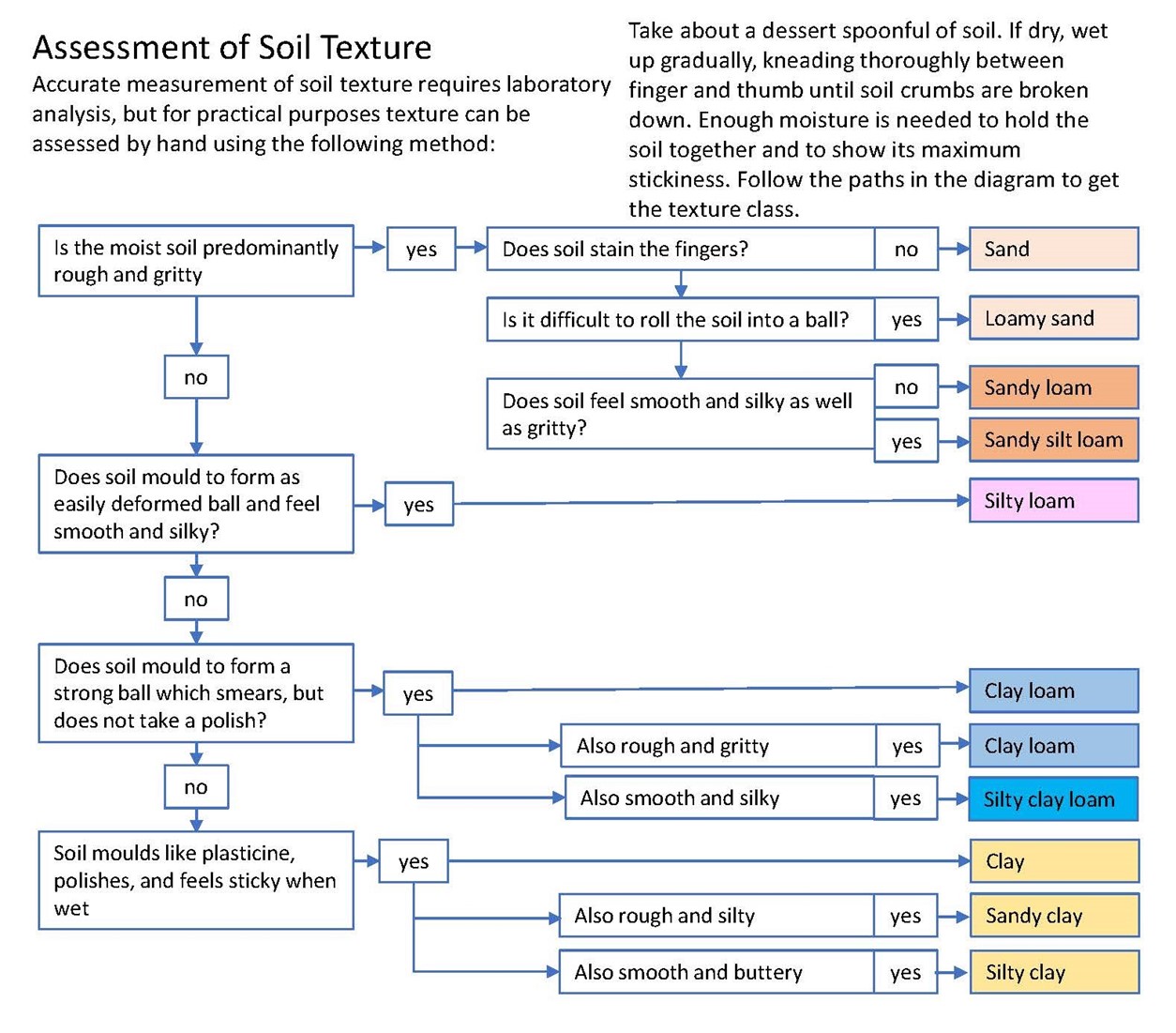
Figure 4: Assessment of Soil Texture, sourced from TN 656 Soils information, texture and liming recommendations
Carrying out regular soil testing is an integral part of understanding the capacity of your soils. Testing will allow you to estimate additional nutrient applications to meet the needs of the growing crop. Soils should be tested every 3 to 5 years.
By sampling your soil you gain an understanding of the chemical composition of the soil (e.g. organic matter content) and can make adjustments to management practices to be more efficient, such as fertiliser requirements accordingly. The Valuing your Soils Practical Guide has a detailed sections on how to interpret soil testing results and gain the best results from fertilisers.
For soil testing to provide meaningful results, it is essential to collect a sample of soil that best represents the area you wish to investigate. To ensure a soil sample is representative, it is important to identify areas of similar soil, crop, management and/or topographic features within which to sample. Within each zone being sampled, it is important to avoid sampling too close to boundary edges and field margins as well as potential ‘hotspot’ areas that might affect the representativeness of your sample, such as where fertiliser, manure or lime has been applied close to the time of sampling or where livestock gather.
Summary of recommended procedure:
- Separate fields according to differences in soil/crop/management/topography features to be assessed.
- Within each zone, walk a zigzag or ‘W’ pattern across the field taking regular soil samples.
- Ideally use a soil corer, otherwise a spade or trowel can be used
- Typical sampling depth is 0-15cm unless sampling for a specific purpose
- Mix the collected soil in a bucket to create a homogenised sample
- Place a sample of the homogenised soil into a clean plastic bag that is clearly labelled
- Send for laboratory testing
Further information
- For information on soil texture and liming recommendations SRUC have produced a Technical Note which you can find here
- For detailed information on soil texture ADHB have produced this information
- Watch this Farm Advisory Service video on soil texture and structure.
- For information on targeting soil nutrients and fertilisers please visit PLANET Scotland.
Table 1 explains the most common soil test that can be assessed and how the results can help management decisions on farm.
| Soil Test | Reason |
| Soil organic matter (SOM) | SOM is key indicator of soil health contributing to soil structure, stability and productivity. SOM comprises complex mixture of material containing key nutrients such as carbon, nitrogen, phosphorus and other micronutrients. As SOM contains approximately 58% carbon, SOM can be used as a proxy for soil carbon content. SOM can be measured via the loss on ignition method. SOM can also be measured via the Dumas method, which measures the total carbon of the soil sample, which can then be converted to organic matter content (by using the conversion factor of 1.724, assuming 58% of soil organic matter is carbon). |
| Further information | |
| Soil pH | Soil pH is a measure of acidity which can have a significant influence on soil nutrient availability, where most essential nutrients are available to crops at an optimal pH range of 6.0-6.5 |
| Further information
Understanding Soil pH: https://www.fas.scot/crops-soils/soils/understanding-soil-ph/ Soil pH-how to measure and manage it based on an understanding of soil texture: https://ahdb.org.uk/knowledge-library/greatsoils-soil-ph-how-to-measure-and-manage-it-based-on-an-understanding-of-soil-texture |
|
| Soil nitrogen content | Soil nitrogen (N) is a vital nutrient for crop growth, however most agricultural soils have limited natural supply of plant available N (nitrate-N) to meet crop demands throughout the growing season. Total nitrogen content can be determined through elemental analysis (usually alongside total carbon content or kjeldahl method), whereas mineral nitrogen (ammonium and nitrate content) is measured via an extraction process |
| Further information
Technical Note (TN731): Nitrogen Recommendations for Cereals, OIlseed Rape and Potatoes: https://www.fas.scot/publication/technical-note-tn731-nitrogen-recommendations-for-cereals-oilseed-rape-and-potatoes/ Technical Note (TN726): Fertiliser recommendations for grassland https://www.fas.scot/downloads/tn726-fertiliser-recommendations-for-grassland-scotland/ |
|
| Soil phosphorus and potassium contents | Important nutrients for plant growth, however, most agricultural soils have limited natural supply of extractable P and K. Plants take up P in the form of phosphate in the soil solution but if concentrations exceed plant uptake, excess P can be leached in surface waters causing pollution and so P management is important. |
| Further information
Technical Note (TN668) Managing soil phosphorus https://www.sruc.ac.uk/media/ootl1mnc/tn668.pdf Technical Note (TN718) Phosphate and potash recommendations for crops grown in Fife, Lothian and Scottish Borders: https://www.sruc.ac.uk/media/8d8ef82fbe96e2e/tn718-phosphate-and-potash-recommendations-for-crops-grown-in-fife-lothian-and-scottish-borders-16-3-2020.pdf |
|
Soils comprise a mixture of SOM derived from the breakdown of leaf litter, crop residues, plant material, dead roots and animal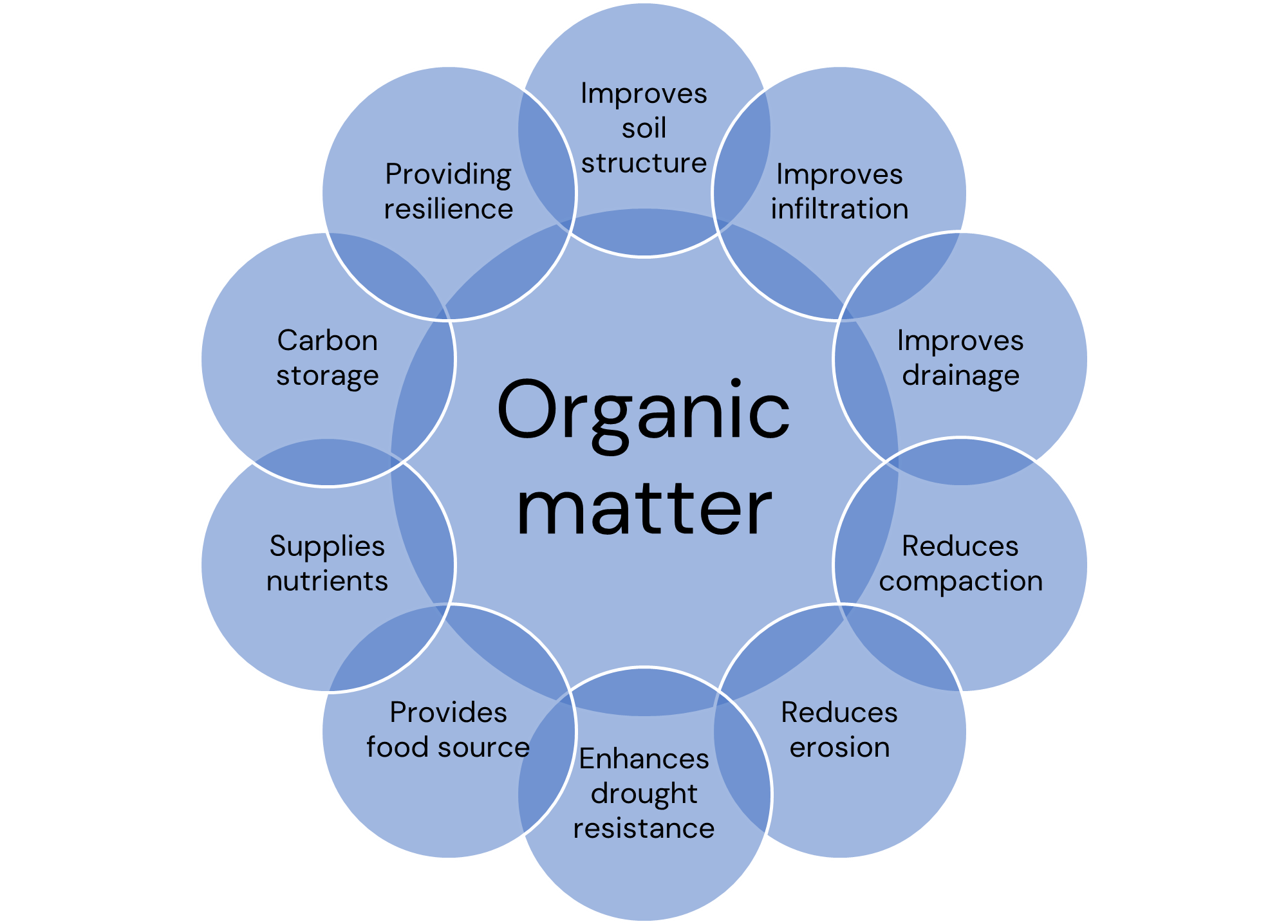 wastes. Soil contains SOM deposited and incorporated at different timescales and which are at different stages of decomposition. This leads to a complex mixture of organic material that provides a wide range of functions, such as providing nutrients, aiding soil aggregation, water holding capacity, buffering pollutants and carbon storage.
wastes. Soil contains SOM deposited and incorporated at different timescales and which are at different stages of decomposition. This leads to a complex mixture of organic material that provides a wide range of functions, such as providing nutrients, aiding soil aggregation, water holding capacity, buffering pollutants and carbon storage.
SOM comprises a mixture of key nutrients such as carbon, nitrogen, phosphorus, potassium and calcium etc. with SOM being approximately 58% carbon. After the world’s oceans, soil is the largest carbon store. Protecting and enhancing our soils can improve carbon storage and the health of soils.
As shown in the diagram (right), organic matter is an extremely important part of the soil composition, offering an array of benefits to the soil.
Soil structure is integral to the ability for the soil to sequester carbon and prevent release to the atmosphere.
Figure 5 shows how carbon is gained and loss through the soil.
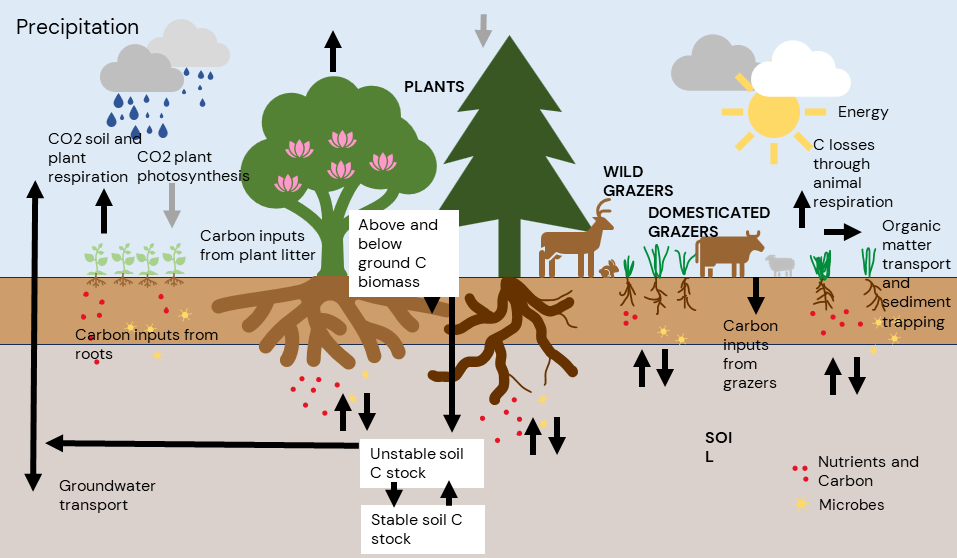
Figure 5 Carbon cycle – Adapted from British Society of Soil Science (2021). Science Note: Soil Carbon
As material is decomposed within the soil, carbon is stored and enhances the health of the soil, however, this takes time. Methods to enhance carbon storage through management methods are discussed in the regenerative agriculture section. There are continuous exchanges in greenhouse gas emissions between soil systems and the atmosphere due to natural processes such as photosynthesis and soil respiration. Many soils have the potential to be net ‘sinks’ of carbon where the uptake of CO2 from the atmosphere through photosynthetic activity or organic matter inputs outweigh losses of carbon through gaseous or leached losses. However, due to anthropogenic influences such as soil disturbance in agricultural systems, many soils have become degraded resulting in a loss of soil organic matter, its associated carbon and net emitter of GHGs
There is much research ongoing that investigates how different management practices can alleviate soil degradation and promote good soil health, stability and conserve (or enhance where possible) soil carbon sinks.
How can you enhance and protect organic matter in soils
Improving your soil organic matter as described above can improve your soil health status. Methods that help to improve organic matter in the soil contribute to binding the soil (aiding soil aggregate stability), improving water holding capacity and infiltration and creating habitats where microorganisms thrive. Scotland’s soils naturally contain a higher level of organic matter than the rest of the UK due to a wetter and colder climate. The organic matter slowly breaks down, accumulating within the soil. Soil organic matter concentrations can vary from 2-60% within the topsoil in Scotland.
Figure 6 Soil Organic Carbon concentrations (%) sourced from Scottish Government
There are various methods to measure organic matter in soil. The AHDB have produced material, developed to support the soil health score card to allow farmers to measure their soil organic matter. Additionally, more information can be found on their soil organic matter page.
Ways to help increase organic matter content in soils can be through:
Organic fertilisers/manure
By using organic fertilisers and manures you can increase soil organic matter and help improve the nutrient status of the soil. To gain full benefit it is important to ensure that you know the nutrient status of the product and know your soils requirement. For more information on organic fertilisers please click here. The Farm Advisory Service have produced material to help you improve the use of organic fertilisers and manures on your land.
Cover crops
Cover crops are noncash crops that are designed to benefit crop rotations. Cover crops can offer a valuable addition to crop rotation with regard to improving soil health by providing organic matter and other nutrients, reducing weeds and reducing erosion risk. Cover crops can aid farm management, protecting the soil surface from water and wind erosion, and allow essential nutrients to stay on farm, provided they are suitable and well planned for the field and soil type.
They can be spilt into three categories:
- Cover: designed to cover bare soil between harvest and establishment of the main crop.
- Catch: designed to prevent nitrogen and phosphorus losses from field (i.e. reduce leaching).
- Green manure: designed to improve soil biodiversity, fertility, carbon content and structure.
Although cover crops are grown for various reasons, farmers will have different motivations for their inclusion within a rotation and it is important that these are recognised before planning a cover crop. Farming for a Better Climate have produce a useful practical guide on the Use of Cover Crops.
Introduction of trees and hedges
The introduction of trees and hedges to a farm can offer great benefits to the soil. Agroforestry increases soil organic carbon, improves nutrient availability, soil fertility and enhances soil microbial activity. In addition, trees and hedges can reduce windblown and water soil erosion. Hedges across the slope can intercept overland flow and reduce the risk of rill formation and soil loss. Trees and hedges promote good soil structure, erosion reduction and soil nutrient retention.
Soil pH is a measure of how acidic/alkaline the soil is. This is important because yield depends on the pH of the soil. More acidic soils, of pH 4 crops are more likely to fail, to pH 8 where soil are richer in calcium and magnesium. The Table 1, sourced from Valuing your Soils Practical Guide, highlights the pH range and impact on nutrient use efficiency.
Table 2 Impacts of pH on crops and recommended targets from Valuing Your Soils Practical Guide
| Soil pH ranges | Impacts | Notes |
| 4 – 5.3 | Very Acidic soil where most crops will fail due to poor nutrient availability and/or presence of soluble forms of aluminium which inhibit plant growth. | Fertiliser use at this pH is not cost effective. |
| 5.3 – 5.5 | Acid soil with much reduced nutrient availability and continued impact of soluble aluminium in mineral soils. Arable crops, including forage, grown within this pH range will have reduced yield and quality. | This is the recommended pH range for peaty soils under grass. Increasing the pH of peaty soils beyond 5.8 is unlikely to be cost effective. |
| 5.5 – 5.8 | Acid soils with very low nutrient use efficiency. Crop yield will be consistently lower and fertiliser use efficiency reduced. | Many of Scotland’s mineral grassland soils are being managed within this pH range. For arable crops grown on organic soils the pH target should be 5.7 – 5.8. |
| 5.8 - 6 | Acid soils with reduced nutrient use efficiency for arable crops but close to target for grass. | The target for mineral grassland soils in Scotland is pH 6. |
| 6 – 6.2 | The optimum pH range for most crops apart from arable and rotational grass on clay and silty soils where the target is 6.3. | At this range there is optimum nutrient availability. |
Soil pH can be very variable, with rainfall, fertilisers, leaching, variety of crop, all altering the pH status. It is important to regularly check the pH of your soil so that you can plan accordingly. Each field will vary so it is important to plan field by field.
Valuing Your Soils Practical Guide and the Farm Advisory Service have produced guidance on understanding and working with Soil pH on farm.
Soil pH can affect the solubility of a number of essential plant nutrients and trace elements (see Figure 7). If pH is out with optimum range, some trace elements will be unavailable for plant uptake or may be leached out of the soil system.
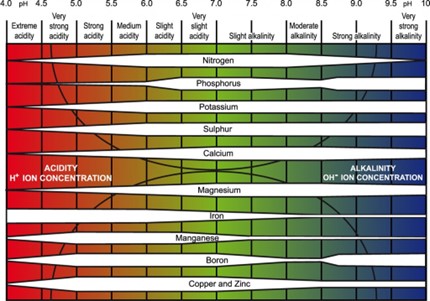
Figure 7 The effect of soil pH on nutrient availability. Source Roques, S et al (2013) Review of the non-NPKS nutrient requirements of UK cereals and oilseed rape
Key nutrients for crop growth, often in low concentrations in soils and so fertilisers are added to soil to ensure nutrient supply is sufficient for optimal yield. However, excess of these nutrients cause pollution such as nitrous oxide emissions (from mineralised nitrates) and water pollution when lost from soils in runoff.
Soil type and specific characteristics determines soil functionality and the best-practice management techniques required to optimise productivity. Therefore, knowing your soil type can help you maximise the health and functionality of your soil and crops. Below in Table 3 are some guidelines to management techniques for different soil types:
Table 3 Soil type and soil functionality
| Soil type | Management options |
| Sandy | Try to minimise ground pressure to reduce compaction. |
| The use of deep tines or subsoilers can loosen plough pans/compaction. | |
| Silty | On lighter and medium silts avoid reduced tillage. |
| Avoid fine seedbeds or capping may be likely | |
| Mouldboard ploughing may work best in these soils | |
| Subsoiling, deep cultivation may be required to break up plough pans/compaction from heave machinery. | |
| Avoid power harrows. | |
| Clay | Keep cultivation to a minimum. |
| Reduced tillage may be preferential. | |
| Try to make seedbed in one pass. | |
| Loamy | On heavier loams reduced cultivation is possible, however, avoid on sandy/silt loams. |
| Deep loosening will be required. |
By understanding your soil type you can decrease the likelihood of compaction, erosion and soil loss by improving its structure and ability to retain nutrients and water within it.
Min (minimum) or No Till (tillage) systems are designed to reduce soil disturbance, maintaining soil structure. In the right circumstances, reduced tillage can offer benefits to the soil, however, this practice is not suitable for all soil types and conditions. If you are interested in pursuing this management technique speak to your local advisor. The Farm Advisory Service has produced a video series looking at reducing tillage.

